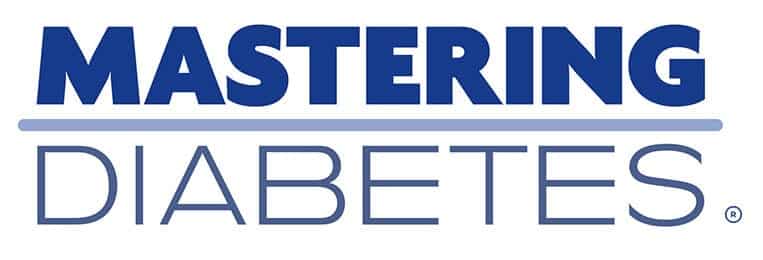You Can Lower Your Blood Sugar Quickly
If you’re going to have any chronic disease, diabetes is an awesome one to have.
Bold statement? Absolutely. But here’s my reasoning: When you have diabetes, you can measure and experience big changes in a short period of time.
Case in point: Lowering your blood sugar levels.
There are certain things you can do that lower your blood sugar levels steadily over time, which is the long-term goal for sure, but there are also steps you can implement as soon as you finish reading this and then see results immediately after your next meal. It’s really that simple and that quick. Today, I’ll give you four things you can do to lower your blood sugar ASAP.
Speaking of simple and quick, we value your time and I don’t want to waste any of it, so let’s dive right in on this one.
Trimming the Fat

First, just because your blood sugar is high, doesn’t mean that excess sugar is the problem. Now let me explain, because having excess sugar in your bloodstream is a problem – but it’s a consequence of the root problem. For instance, if you have a water leak in your kitchen or bathroom, having water flooding into your house is definitely a problem. But the flooding water is a consequence of the leak, which is the root problem. To truly fix the situation, you need to address the leak.
So, what’s the leak in this scenario? Believe it or not, the root issue when you have high blood sugar, is that you are eating too much fat. We have other articles and videos that explain this concept in depth, so if you are interested in a deep dive on this, check out this video.
For today, we’ll give you the basics. When you eat high fat meals, the fat gets broken down and stored in your body. Some of this fat ends up inside your muscle and liver cells, and it interferes with insulin receptors on the cells, making it harder for insulin to work properly. You see, insulin's job is to "unlock" the cells so glucose from your blood can enter and be used for energy. When fat blocks these receptors, glucose can't get into the cells and stays in your blood instead. As a result, you have high blood sugar levels. If this goes on for a long time, it can lead to insulin resistance, where your body becomes less responsive to insulin and struggles to manage blood sugar effectively. Eating less fat allows the cells to clear out this stored fat, which improves your insulin sensitivity and lowers your blood sugar.
So what does “low fat” mean, specifically? It means that 15% or less of your daily calories come from fat. To put this into practice, we recommend having no more than 10 grams of fat per meal. We’ve found this to be the most foolproof strategy to lower blood sugar levels and ultimately improve your insulin sensitivity in a lasting way.
So that’s step number one. But let us be clear that while you are eating less fat, you aren’t eating less food. You are eating just as much or even more!
Fuel Up With Fiber

Speaking of more, one thing we definitely recommend eating more of is fiber. When you hear the word “fiber,” what do you think of? …Probably poop! But now after watching this video, you can also think of low blood sugar!! Because fiber is not only good for your digestive tract, but also for lowering and stabilizing your blood sugar levels.
Dietary fiber slows the process of breaking down carbohydrates into glucose, which is the form of sugar that either gets used for energy or gets piled up in excess in your bloodstream (AKA high blood sugar). When you include dietary fiber in your meals, you have a more steady rise and fall of blood sugar after those meals, rather than the sharp spike and crash that you might typically associate with a high-carbohydrate meal.
In a randomized trial comparing a high-fiber diet with a low-fiber diet for people with insulin-dependent diabetes, in which both groups consumed similar nutrient profiles and neither group lost weight, after 24 weeks the high fiber diet group had significantly lower daily blood sugar levels and decreased hypoglycemic events.
So, what foods have fiber? The easiest answer is: all whole plant-based foods. All fruits, all vegetables, all whole grains, all beans and legumes and tofu and tempeh, all nuts and seeds… literally all unprocessed plant foods are good sources of fiber. On the other hand, meat, dairy, and ultra-processed foods like sugar and oils do not have any fiber.
Let us emphasize that last line again, because it’s kind of a hidden fact in the nutrition world. Animal products contain no fiber. Meat, cheese, milk, etc have no fiber. Ultra-processed foods like oil and sugar also do not contain any fiber. By definition, fiber comes from whole plant foods. You don’t need a psyllium husk supplement or a fiber one bar to get it, you just need to eat some fruits, vegetables, grains, and beans. It’s really that simple.
Those are our suggestions to guide your food choices, which are the most important decisions you make if you want to lower your blood sugar. But other choices are also important! So our next two tips cover other areas of your lifestyle.
Movement Matters

The first is exercise. Probably no big surprise there - we all know exercise is healthy for us. But not just for weight loss! Exercise has a huge effect on lowering your blood sugar.
So that we don’t miss the forest for the trees, let’s start by acknowledging that any exercise, done for any amount of time, at any time before or after your meals, lowers your blood sugar—so do what you can, when you can.
That being said, let’s look at some specifics. Zone 2 training is our top recommendation. Zone 2 training, which is moderate-intensity exercise where your heart rate is between 60-70% of your maximum, is associated with increasing your body’s glucose transporters AKA lowering your need for insulin, as well as burning more fat, making more mitochondria, and lowering inflammation. If you have the time and are willing to exercise for at least 30 mins 3 times a week, then we suggest you make that part of your weekly routine.

If you don’t feel like you can make the time commitment for zone 2 exercise, brief high intensity exercise sessions have also been shown to be effective for lowering blood sugar levels. Some of this research shows benefits after just 7.5 minutes of exercise per week!
One of the best benefits of exercise in regards to lowering blood sugar is that the effects can last multiple days after the exercise takes place. The workout you do on Monday could still be lowering your blood sugar levels on Wednesday or Thursday. If you like high-reward investments, exercise is the way to go.
And to make it an even higher reward, exercise can help you lower something else too… and that thing is stress.
Relaxation Station for the Win

As far back as the 17th century, physicians were associating stress with diabetes. It was a well-known concept by the 19th century, and the evidence has only grown since then. Through a variety of pathways, the nervous system influences glucose metabolism.
If you took 8th grade biology, you’ve probably heard of the fight or flight response. This is how your body prepares to keep you safe in a threatening situation. However, it was built for threatening situations like the attack of a predator that you need to fight or run away from, rather than for an approaching deadline of a work project.
In the event that you needed to fight a lion or run away from it, you would need a burst of energy to do that. So your body releases extra glucose into the bloodstream AND simultaneously slows the rate at which your non-essential organs (aka the ones that don’t help you in running away) use that glucose, therefore raising your blood sugar.
If your stress is chronic, meaning that you feel stressed regularly, which is unfortunately the norm these days, then your body produces cortisol which has the same effects as adrenaline in the short-term fight or flight scenario, but over a longer period of time. Hello, high blood sugar!
Although it’s become all too common, stress is not inevitable. Life will always have its challenges, but you can develop skills to move through those challenges with more stability, calm mind and body, and resilience. Tools like meditation, therapy, and nervous system regulation practices can be incredibly helpful. And as I said earlier, you can even use exercise as a stress-regulating technique and get a two-for-one deal with lowering your blood sugar!
Whatever you do, remember that stress not only sucks the joy out of your life but it also makes blood glucose management much harder than it needs to be. When you use stress-management techniques, you make your life better in multiple ways – including lowering your blood sugar!
Your Body is Ready to Heal

So there you have it. Four ways to lower your blood sugar and see results right away.
Eat less than 10g of fat per meal.
Up the fiber content of your meals - AKA eat more fruits, vegetables, grains, and beans.
Exercise regularly.
And build skills that reduce stress.
Your body is ready to heal. If you give it the right circumstances, your body will work to improve your health dramatically, as quickly as it possibly can. That’s the truth, and if you need to see it to believe it, then all you have to do is follow the four steps I shared in this post.
Lower Your A1c and Get to Your Ideal Body Weight ... Guaranteed

Your results are guaranteed. Join more than 10,000 ecstatic members today
Personalized coaching puts you in immediate control of your diabetes health, helps you gain energy, improves your quality of life, and reduces or eliminates your meds.

